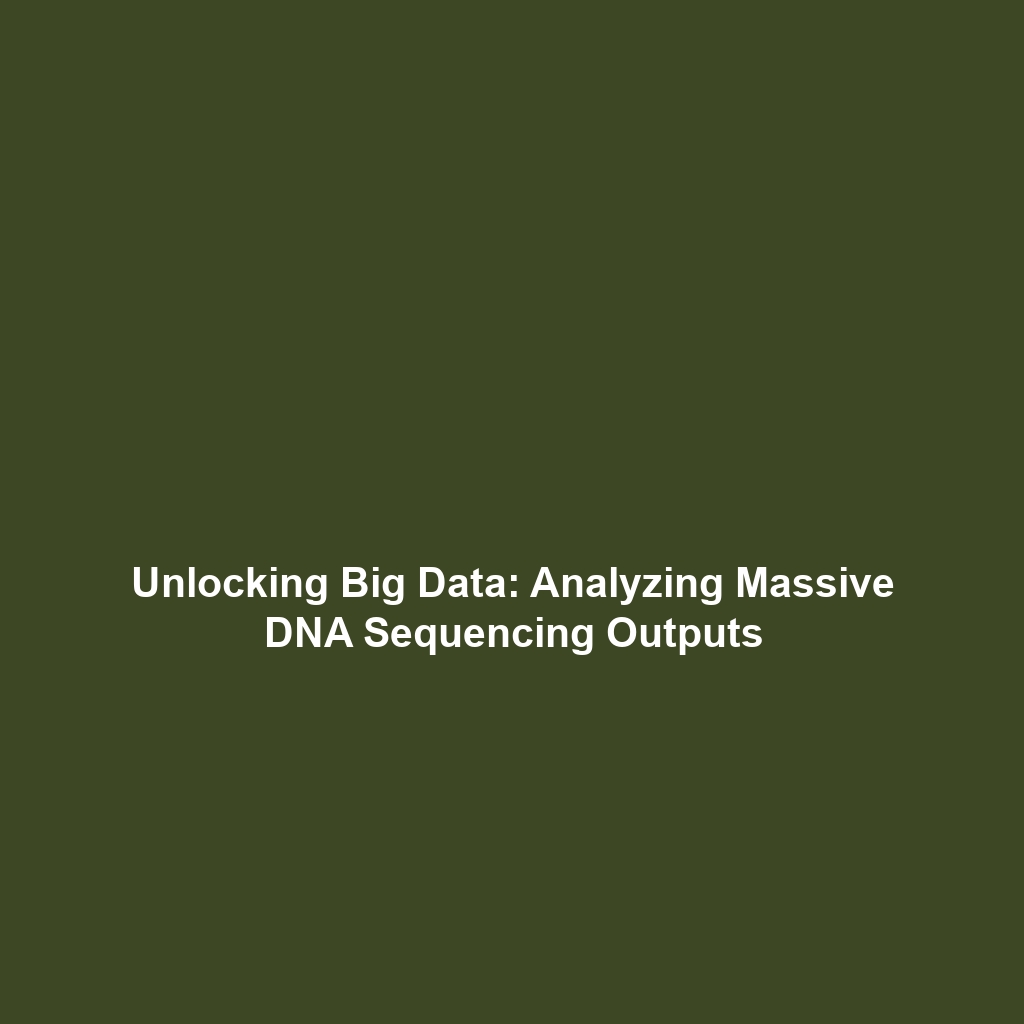DNA Sequencing Technologies Generate Massive Data Volumes
DNA sequencing technologies have revolutionized the field of genetics, generating massive volumes of data that require sophisticated tools for analysis and interpretation. As we delve into the realm of Big Data in Science, it becomes crucial to understand how these advanced sequencing technologies not only enhance our knowledge of genetic information but also challenge current data processing capabilities. In an era where data drives scientific advancements, the interplay between DNA sequencing and big data analytics could pave the way for unprecedented discoveries.
Key Concepts in DNA Sequencing and Big Data
To grasp the significance of DNA sequencing technologies in the context of Big Data in Science, we must explore the following key concepts:
1. DNA Sequencing Technologies
DNA sequencing refers to the process of determining the precise order of nucleotides within a DNA molecule. Technologies such as Next-Generation Sequencing (NGS) and Whole Genome Sequencing (WGS) have emerged to facilitate rapid and cost-effective sequencing. These methods yield vast amounts of genomic data that demand robust analytical tools for interpretation.
2. The Role of Big Data
Big data encompasses vast datasets that traditional data processing software cannot efficiently handle. In the realm of genomic research, the sheer volume of data generated by sequencing technologies has led to the development of specialized informatics tools capable of managing, storing, and analyzing complex genetic information.
Applications and Real-World Uses
The application of DNA sequencing technologies within the field of Big Data in Science is extensive. Here are notable examples:
- Personalized Medicine: By analyzing individual genomic data, healthcare providers can tailor treatments based on a person’s unique genetic makeup.
- Genomic Epidemiology: Sequencing technologies assist in tracking disease outbreaks and understanding pathogen evolution, critical in public health responses.
- Agricultural Genomics: DNA sequencing aids in the development of genetically modified crops, optimizing yield and resistance to disease.
Current Challenges in DNA Sequencing and Big Data
While advancements in DNA sequencing technologies offer tremendous potential, several challenges arise:
- Data Overload: The massive data volumes generated require advanced computational resources which may not be accessible to all researchers.
- Data Interpretation: The complexity of genomic data necessitates expert knowledge and sophisticated algorithms for meaningful analysis.
- Ethical Concerns: Ensuring data privacy and addressing ethical implications of genetic information sharing remains an ongoing challenge.
Future Research and Innovations
Looking ahead, several innovations are poised to impact DNA sequencing technologies and their integration within Big Data in Science:
- Long-Read Sequencing: Next-generation long-read technologies may improve accuracy and data quality, expanding their applications in complex genomic regions.
- AI and Machine Learning: The application of artificial intelligence in genomic data analysis could revolutionize how we process and interpret genetic information.
- Cloud Computing: Utilizing cloud-based solutions for data storage and analysis can enhance collaboration and accessibility of genomic data across institutions.
Conclusion
DNA sequencing technologies present both remarkable opportunities and substantial challenges in the landscape of Big Data in Science. The ability to generate and analyze vast amounts of genetic information is transforming fields such as medicine and agriculture. Stakeholders must continue to innovate and address the accompanying challenges to harness the full potential of these technologies. For further reading on DNA sequencing and its implications, explore our articles on Genomic Medicine and Big Data Analytics in Life Sciences.

Leave a Reply